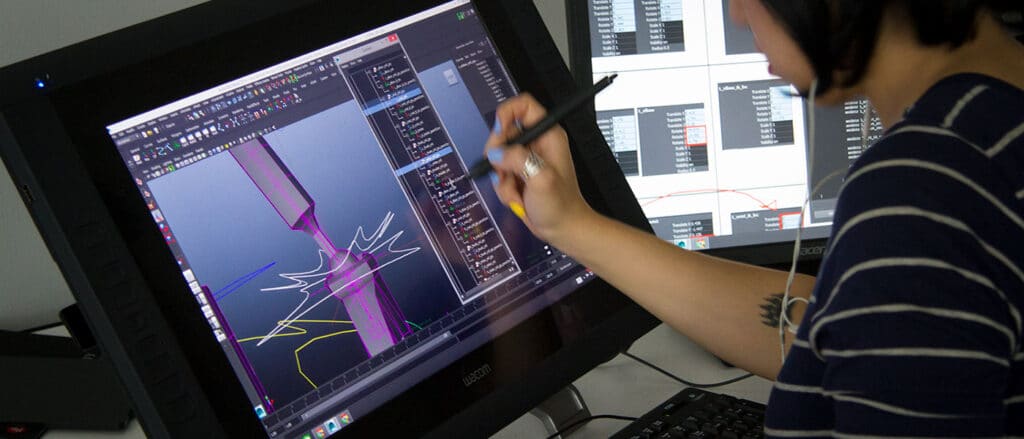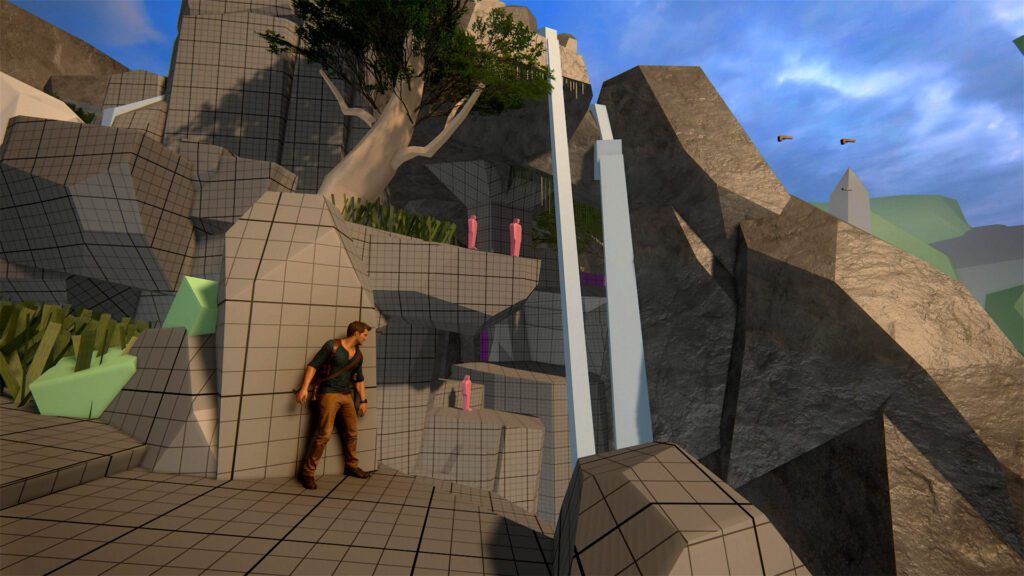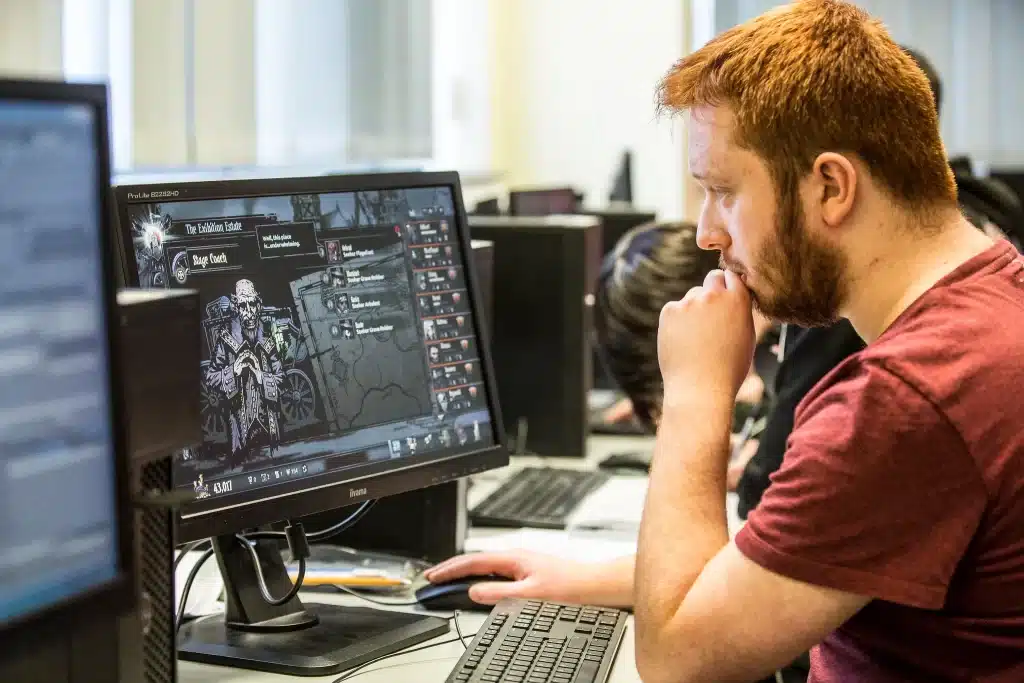In the world of game development, creating immersive and captivating virtual worlds is a top priority. There are many elements important to this creation process, and production design is the centerpiece of everything. But what is production design?
That’s the question we are trying to answer in this article, as well as delve into the intricacies of production design, its importance, and its role in shaping the player’s experience. So let’s get right to it.

What is production design?
Putting it simply, production design in game development is a multi-faceted discipline that encompasses the art of crafting the visual and environmental aspects of a game. However, things go much deeper than that.
It involves the meticulous planning, creation, and implementation of every creative element, from characters to animation. So you can imagine how things can get complex from that point on.
It is a dynamic field that involves a wide range of tasks that collectively shape the visual and environmental elements of a video game, with the ultimate objective of delivering a captivating and immersive experience for players.
So let’s discuss some key components of what is production design.
Key components of production design
Character design
Character design is a cornerstone of game production and a big piece of what is production design in games.
It involves the creation of the game’s central figures, be they heroes, villains, or non-playable characters (NPCs). These characters must not only be visually appealing but also align with the game’s narrative and thematic elements.
Their personalities, animations, and visual styles are carefully crafted to evoke emotions and engage players.
In an open-world game, character design extends to outfit and customization options, enabling players to immerse themselves in the game’s world more deeply.
Environment design
The virtual worlds within games are equally critical. Production designers craft detailed and interactive environments that become integral to the player’s experience and a big part of what is production design.
This encompasses everything from the terrain and architecture to the foliage and props. By creating rich, believable settings, designers can heighten immersion and make players feel like they are inhabiting a living, breathing world.
Modeling and texturing
Modeling and texturing serve as the bridge between imagination and reality in game development.
Artists shape or draw models, giving them form and structure, while texturing infuses them with depth, color, and detail. This level of detail is what makes in-game objects, characters, and environments not only visually appealing but also realistic.
Level design
Level design is the blueprint of a game’s structure. It entails the creation of individual game levels, missions, and challenges.
The quality of level design directly influences a player’s progression and engagement. Well-designed levels can guide players through the game, offer a sense of progression, and maintain their interest.
Puzzles, obstacles, and enemy placements are meticulously planned to ensure a balanced and enjoyable gameplay experience.

Animation
Animation breathes life into the game. It is not limited to character movements but extends to the dynamic elements of the game world, like swaying trees, flowing water, or mechanical systems.
Fluid and realistic animations create a sense of immersion, enabling players to connect more deeply with the virtual world. Attention to detail in animations, such as facial expressions, gait, or combat maneuvers, can evoke emotions and enhance storytelling.
Why focus on production design?
Perhaps one of the most crucial aspects of production design in game development is its ability to create immersion.
Immersion is the magic that transports players from the real world into the game’s universe. A well-executed production design meticulously crafts the in-game environments, characters, and overall aesthetics, making them feel real and tangible.
This, in turn, encourages players to suspend disbelief and engage with the game on a deeper level. The more immersed players are, the more they are likely to feel connected to the game and invested in its world, resulting in increased player engagement and enjoyment.
Game development often relies on the art of storytelling to captivate players, and production design plays a pivotal role in this by visually conveying the game’s narrative, emotions, and themes.
Characters, environments, and visual elements are designed to not only be aesthetically pleasing but also serve as storytellers in their own right.
Through careful design, characters’ appearances can reflect their personalities, backgrounds, and motivations, while in-game environments can evolve to reflect the progression of the narrative.
This synergy between storytelling and production design is essential in crafting a deep and engaging narrative experience for players.
Thoughtful production design can also enhance gameplay by guiding players and providing visual cues that direct them through the game’s mechanics and objectives.
It can also make interactions more intuitive, reducing player frustration and ensuring they can fully enjoy the gameplay mechanics.
Production design is not just about aesthetics; it’s about creating a seamless and enjoyable experience that keeps players coming back for more.
A focus on production design can also elevate the visual quality of a game. In the world of video game development, visual appeal is a critical factor, and a game’s marketability and success are often closely tied to its visual quality.
High-quality production design can turn heads, attract attention, and retain players. Stunning visuals and an aesthetically pleasing game world can create a strong first impression – which can be the difference between a game’s commercial success and failure.
Beyond mere aesthetics, visual appeal also influences a game’s replay value. Players are more likely to revisit and recommend a game that is visually captivating and engaging.

Production design: the first step to any successful game
Hopefully, by now you understand what is production design, and how its importance cannot be overstated, as it not only enhances immersion and storytelling but also contributes to a game’s overall appeal and success in a competitive industry.
In the ever-evolving world of game development, production design remains a cornerstone of creating unforgettable gaming experiences.
Through careful planning and execution, production designers create immersive and captivating gaming experiences that transport players to new realities.
We here at Main Leaf, throughout our 11 years of activity in the game development industry, have always given special care to production design, so we know firsthand its importance.
If you liked this article, check out our blog – where you can find many others about the world of game development.

